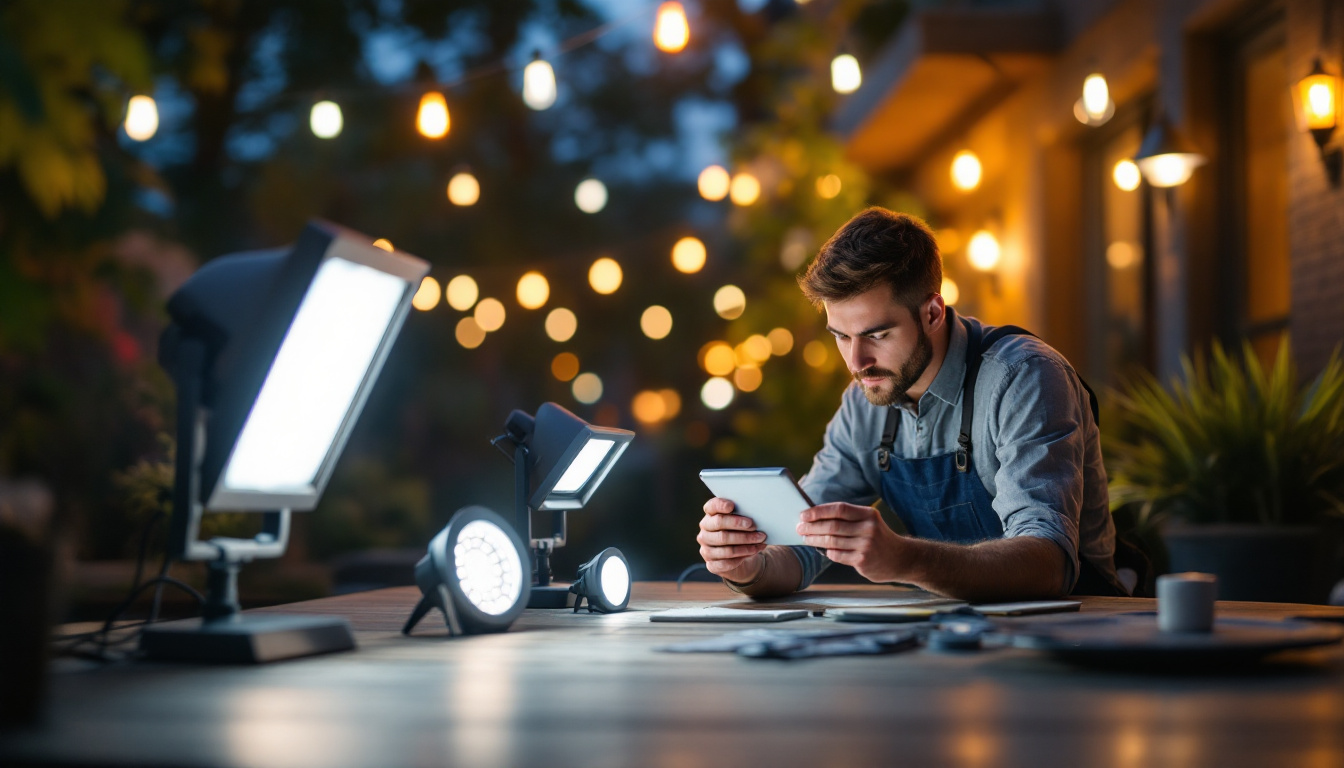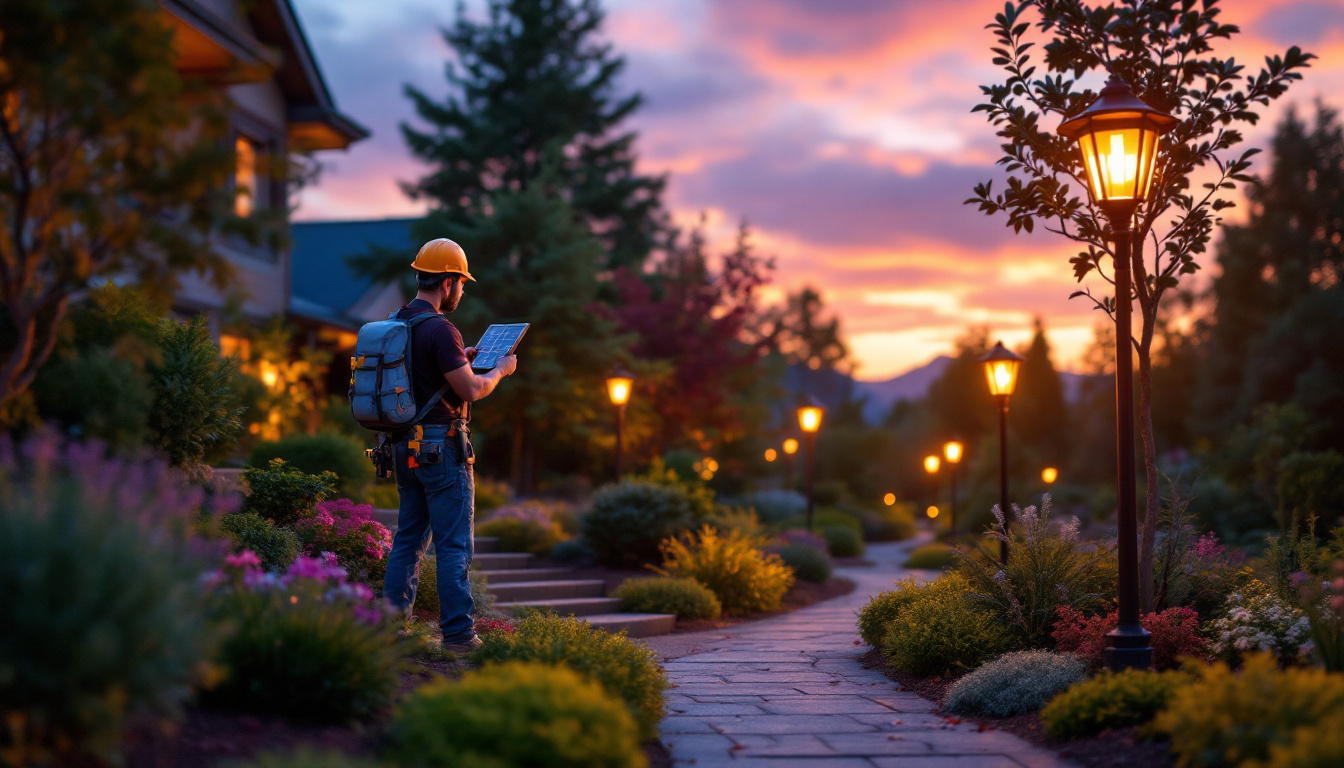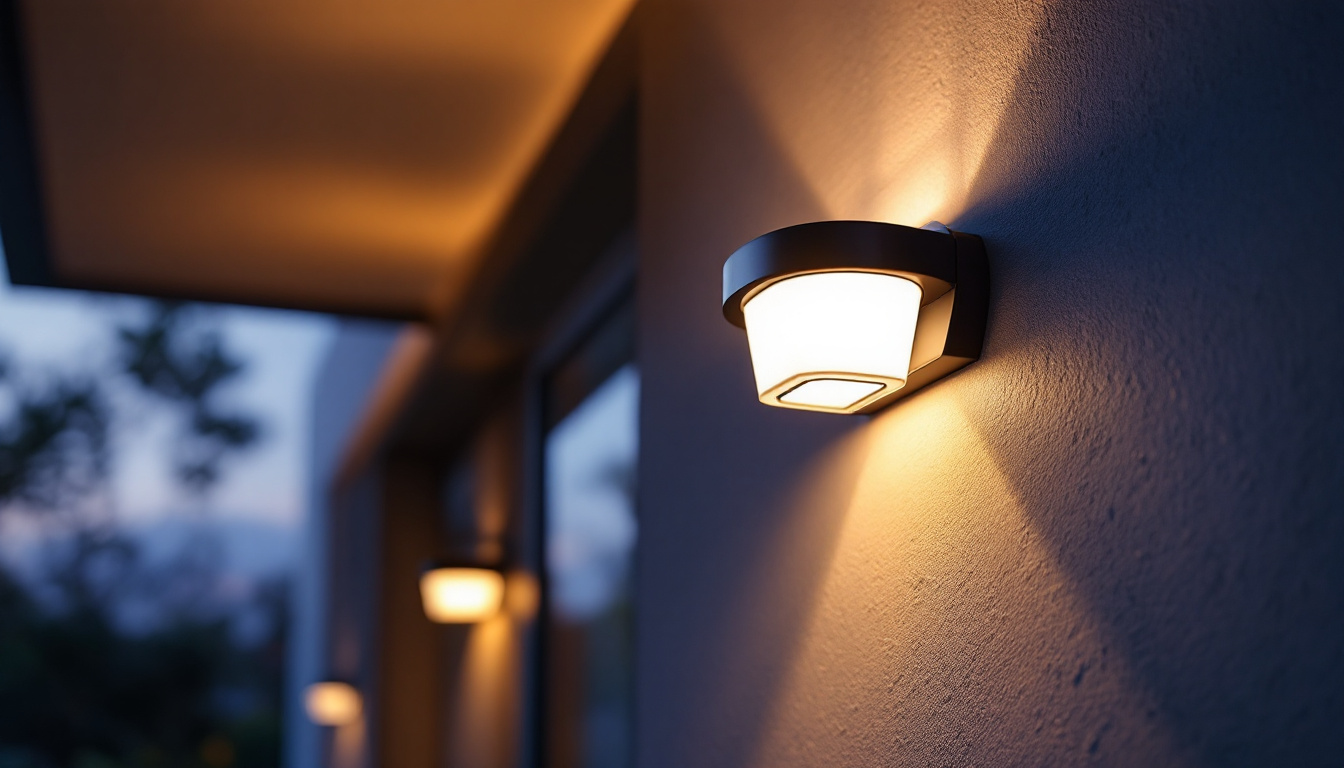
In recent years, the evolution of lighting technology has dramatically transformed the landscape of outdoor illumination. LED lights have emerged as the preferred choice for both residential and commercial applications. For lighting contractors, understanding the nuances of outside LED lights is crucial for delivering optimal solutions to clients. This article aims to demystify outside LED lights, providing essential insights and practical knowledge that contractors need to thrive in this competitive field.
Light Emitting Diodes (LEDs) are semiconductor devices that emit light when an electric current passes through them. Unlike traditional incandescent or fluorescent bulbs, LEDs are energy-efficient and have a longer lifespan, making them an attractive option for outdoor lighting applications. The technology behind LEDs has evolved rapidly over the past few decades, leading to significant advancements in brightness, color range, and overall performance. This evolution has opened up a myriad of possibilities for creative lighting designs in both residential and commercial spaces.
One of the most significant advantages of LED lights is their energy efficiency. LEDs consume significantly less electricity compared to traditional lighting options. This efficiency translates to lower energy bills for clients, making LED installations an appealing choice for both residential and commercial properties. In fact, studies have shown that switching to LED lighting can reduce energy consumption by up to 80%, which is particularly beneficial for businesses looking to cut operational costs.
Moreover, the reduced energy consumption contributes to a smaller carbon footprint, aligning with the growing demand for sustainable practices in the construction and renovation sectors. As a lighting contractor, emphasizing these benefits can help clients make informed decisions about their outdoor lighting needs. Furthermore, many governments and utility companies offer rebates and incentives for switching to LED technology, making it an even more financially attractive option for consumers looking to upgrade their lighting systems.
LED lights are renowned for their impressive lifespan, often lasting up to 25,000 hours or more, depending on usage and environmental conditions. This longevity means fewer replacements and maintenance visits, which can significantly reduce costs for clients over time. The extended lifespan not only saves money but also minimizes waste, contributing to a more sustainable approach to lighting solutions.
Additionally, LEDs are more durable than traditional bulbs, as they are less susceptible to breakage and can withstand harsh weather conditions. This resilience makes them particularly suitable for outdoor applications where exposure to the elements is a concern. Unlike fragile incandescent bulbs, which can shatter easily, LED fixtures are typically encased in sturdy materials that protect them from impacts and moisture. This durability is essential for installations in areas prone to extreme temperatures or heavy rainfall, ensuring that the lighting remains functional and effective regardless of the weather. As a result, investing in LED technology not only enhances the aesthetic appeal of outdoor spaces but also ensures reliability and safety for years to come.
Understanding the various types of outdoor LED lights available is essential for lighting contractors. Each type serves a specific purpose and can enhance the aesthetic and functional aspects of outdoor spaces.
Pathway and landscape lighting are crucial for enhancing safety and visibility in outdoor areas. LED pathway lights illuminate walkways, driveways, and gardens, providing clear guidance for pedestrians while also adding an appealing visual element to the landscape.
When selecting LED pathway lights, contractors should consider factors such as brightness, beam angle, and color temperature. Warm white LEDs create a welcoming atmosphere, while cooler temperatures can provide a more modern look. Additionally, adjustable fixtures can allow for versatility in lighting design. Incorporating solar-powered options can also be an eco-friendly choice, as they harness sunlight during the day to power the lights at night, reducing energy costs and promoting sustainability.
Flood lights are powerful outdoor fixtures designed to illuminate large areas. They are ideal for security purposes, as they can deter potential intruders by providing bright, even lighting across expansive spaces.
When installing flood lights, it is essential to consider the placement and angle to minimize light pollution and ensure that the light is directed where it is needed most. Many modern LED flood lights also come with motion sensors, enhancing security while conserving energy. Furthermore, some flood lights feature adjustable brightness settings, allowing users to tailor the intensity of the light depending on the time of night or specific events, making them versatile for both security and ambiance.
Wall packs are commonly used for illuminating building exteriors, parking lots, and entryways. These fixtures provide efficient lighting while enhancing the architectural features of a structure. LED wall packs are available in various designs, allowing contractors to choose options that best suit the client’s aesthetic preferences.
Ceiling lights, such as LED canopies, are also popular for outdoor applications, particularly in commercial settings. These fixtures provide ample illumination for outdoor dining areas, loading docks, and other operational spaces. In addition to their functional benefits, many LED ceiling lights are designed with energy efficiency in mind, often featuring integrated sensors that adjust the lighting based on ambient light levels. This not only helps in reducing energy consumption but also prolongs the lifespan of the fixtures, making them a smart investment for businesses looking to enhance their outdoor environments while keeping operational costs low.
Proper installation is critical to the performance and longevity of outdoor LED lights. Lighting contractors must be well-versed in the specific requirements and best practices for installing these fixtures.
Before installation, it is essential to assess the electrical requirements of the LED fixtures. Most outdoor LEDs operate on low voltage, which can be a significant advantage in terms of safety and energy efficiency. Contractors should ensure that the existing electrical infrastructure can support the new lighting system.
Additionally, using outdoor-rated wiring and connectors is crucial to prevent electrical failures and ensure the system’s durability. Proper grounding and circuit protection should also be implemented to safeguard against power surges and other electrical issues.
The placement of outdoor LED lights can significantly impact their effectiveness. Contractors should consider the intended use of the space, as well as the surrounding landscape and architecture, when designing the lighting layout.
Strategic placement can enhance safety, highlight key features, and create a welcoming ambiance. Utilizing lighting design software can assist in visualizing the final outcome and making necessary adjustments before installation.
While LED lights are known for their longevity, regular maintenance is still necessary to ensure optimal performance. Lighting contractors should educate clients on the importance of routine checks and provide guidance on how to troubleshoot common issues.
Conducting regular inspections of outdoor LED lights can help identify potential issues before they escalate. Contractors should encourage clients to check for any signs of damage, such as flickering lights or physical wear on fixtures.
Additionally, cleaning the fixtures periodically can improve light output and maintain aesthetic appeal. Dust, dirt, and debris can accumulate on the lenses, diminishing the effectiveness of the lighting system.
Despite their durability, LED lights can experience issues from time to time. Common problems include flickering, dimming, or complete failure. Contractors should be prepared to troubleshoot these issues effectively.
Flickering lights may indicate a loose connection or incompatible dimmer switch, while dimming can result from voltage fluctuations. In cases of complete failure, checking the power supply and ensuring proper installation can often resolve the issue.
The outdoor lighting industry is continually evolving, with new trends emerging that reflect changing consumer preferences and technological advancements. Staying informed about these trends can help lighting contractors remain competitive and offer innovative solutions to clients.
Smart lighting technology has gained traction in recent years, allowing users to control their outdoor lighting systems remotely. This technology can be integrated with home automation systems, enabling users to adjust brightness, color, and timing through mobile apps or voice commands.
For lighting contractors, offering smart lighting solutions can enhance the appeal of outdoor installations. Educating clients on the benefits of smart technology, such as energy savings and convenience, can lead to increased sales and customer satisfaction.
Color changing LED lights have become increasingly popular for outdoor applications, allowing users to customize the ambiance of their spaces. These fixtures can create dynamic lighting displays for events or simply enhance the mood of a backyard gathering.
Contractors should familiarize themselves with the various color changing options available, including RGB and RGBW systems, to provide clients with tailored solutions that meet their specific needs.
As outdoor LED lighting continues to evolve, it is essential for lighting contractors to stay informed and adapt to the changing landscape. Understanding the fundamentals of LED technology, the various types of outdoor fixtures, and the best practices for installation and maintenance can significantly enhance a contractor’s ability to serve clients effectively.
By embracing trends such as smart lighting solutions and color changing LEDs, contractors can position themselves as leaders in the industry, offering innovative and energy-efficient solutions that meet the demands of modern consumers. Ultimately, a thorough understanding of outside LED lights will empower lighting contractors to create beautiful, functional, and sustainable outdoor spaces for their clients.
Ready to elevate your lighting projects with the latest in LED technology? Look no further than LumenWholesale, where we provide lighting contractors with superior, spec-grade lighting products at unbeatable wholesale prices. Say goodbye to inflated markups and hello to a vast selection of industry-standard, high-performance lighting options. With the added convenience of free shipping on bulk orders, LumenWholesale is your go-to source for quality, affordability, and hassle-free service. Don’t compromise on your lighting needs—choose LumenWholesale for the best value in wholesale lighting. Start browsing our collection today and bring your outdoor LED lighting visions to life. Wholesale Lighting at the Best Value.

Discover the must-have 8-foot LED bulbs that are revolutionizing the lighting industry for contractors.

Discover essential tips and innovative strategies for lighting contractors to master the use of solar-powered LED lights.

Discover the essential checklist for lighting contractors focused on commercial warehouse projects.

Discover how solar exterior sconces can be a game-changer for lighting contractors looking to win more bids.